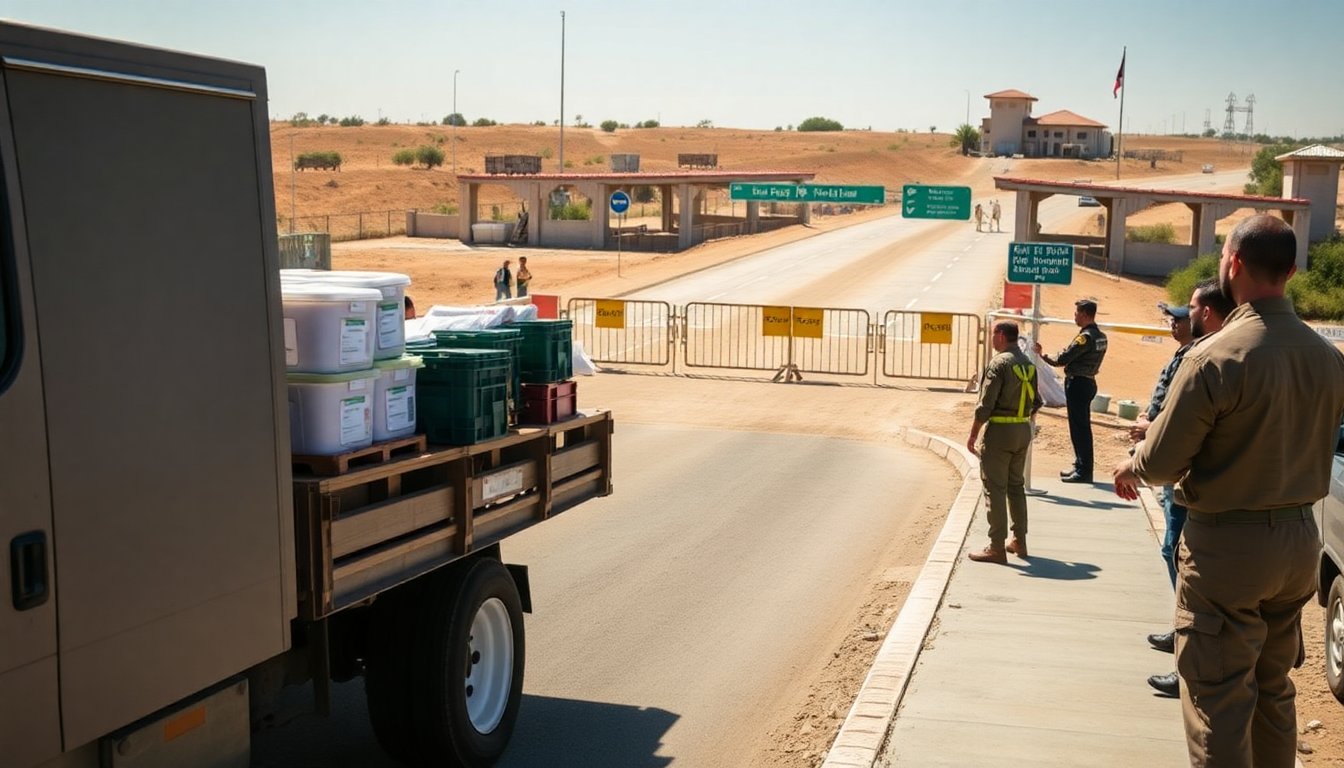Table of Contents
In a significant development for humanitarian efforts in the region, the Zikim crossing, a crucial gateway into northern Gaza, has officially reopened. This reopening follows a two-month closure by Israeli officials, driven by increasing pressure from international organizations, including the United Nations, to facilitate the delivery of essential aid to the region.
The resumption of aid through this crossing is particularly vital, given the deteriorating humanitarian conditions faced by the population in northern Gaza, severely impacted by the ongoing conflict. The Israeli government announced that the crossing will now remain open permanently, signaling a hopeful shift in the flow of assistance to the region.
Background on the humanitarian crisis in Gaza
The humanitarian situation in Gaza has reached critical levels, with the United Nations reporting catastrophic levels of hunger and deprivation. Following a ceasefire brokered by the United States, expectations for an influx of aid were high, with plans to facilitate the entry of at least 600 trucks daily into the Strip. However, the reality has fallen short of these expectations, as aid deliveries have been sparse.
In August, the UN declared famine conditions in northern Gaza, a stark indicator of the dire circumstances faced by its residents. Despite the reopening of the Zikim crossing, aid convoys have struggled to navigate logistical challenges and security checks imposed by Israeli authorities.
Details on the reopening of the Zikim crossing
According to the Israeli Defense Ministry’s body responsible for civilian affairs, COGAT, the Zikim crossing will facilitate the flow of humanitarian trucks into Gaza following customary security inspections. This step is crucial for ensuring that aid supplied by the UN and other international entities reaches those in need.
Current conditions and logistical challenges
As reported by Al Jazeera, the reopening of the Zikim crossing marks its first operational status since the ceasefire. With Zikim now functional, there are three crossings into Gaza available for humanitarian aid, including the Kerem Shalom crossing in the south and the Kissufim crossing in the central area.
However, significant logistical hurdles remain. The UN’s Office for the Coordination of Humanitarian Aid has emphasized that direct access to the northern part of Gaza is essential for delivering adequate assistance. Even as aid begins to trickle in through Zikim, reports indicate that Israeli airstrikes and artillery fire continue in various areas of Gaza, complicating the delivery of humanitarian support.
Political implications and future outlook
The reopening of the crossing comes amid political shifts in Israel. Ron Dermer, a key negotiator involved in the ceasefire discussions, announced his resignation from his ministerial role. His departure raises questions about ongoing negotiations concerning further humanitarian arrangements and the future of aid access in Gaza.
The situation remains fluid, and the international community continues to monitor developments as humanitarian organizations work to assess needs on the ground. The challenges of delivering aid effectively while ensuring security for both aid workers and the population are paramount.
While the reopening of the Zikim crossing represents a positive step towards addressing the urgent humanitarian crisis in northern Gaza, substantial work remains to ensure that aid can reach those most in need without interruption. Sustained efforts from the international community, alongside local organizations, will be vital in navigating the complex realities on the ground.


